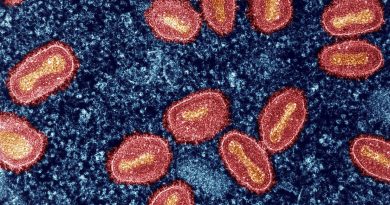COVID-19 exacerbated life expectancy trends in the US (By: Stephanie Soucheray, MA)

Researchers have published new data in the American Journal of Epidemiology showing that COVID-19 led to shortened life expectancies across the United States and exacerbated existing racial disparities compared to 20 high-income peer countries, a phenomenon the authors called a “disadvantage in longevity.”
The study was based on records from the National Center for Health Statistics (NCHS) for 2019 and 2020, and COVID-19 deaths were identified per coding on death records. Provisional counts of death in 2021 (total and separate by COVID-19) were obtained from the December 21, 2022, data release of the NCHS provisional mortality file, the authors said. US life expectancy was further stratified by five categories of race/ethnicity.
Increases in U.S. death rates in 2020 were highly racialized, disproportionately affecting the country’s Native American, Hispanic, and Black populations.
The authors compared US data with death counts for 2019, 2020, and 2021 from 20 peer countries from the January 9, 2023, Human Mortality Database Short-term Mortality Fluctuations (HMD-STMF) publication.
“Increases in U.S. death rates in 2020 were highly racialized, disproportionately affecting the country’s Native American, Hispanic, and Black populations,” the authors wrote. Compared to peer countries, the decline in life expectancy seen in the United States was higher, more racialized, and affected more people in midlife (ages 25 to 54).
Total US life expectancy fell from 78.85 years in 2019 to 76.99 years in 2020 and to 76.44 (uncertainty range [UR], 76.27 to 76.62) years in 2021. This is a 1.86-year decrease and an additional decrease of 0.55 (UR, 0.36 to 0.71) years between 2020 and 2021.
Peer countries saw lower expectancy in older adults
In 20 peer countries, however, life expectancy decreased by 0.39 years between 2019 and 2020 and then increased by 0.23 years (UR, 0.06 to 0.39) between 2020 and 2021. Spain and Italy had the largest decreases in life expectancy (1.25 and 1.18 years, respectively).
Importantly, in peer countries, the decreases were seen in older—not middle-aged—adults. In 2020, most (87.6%) of the mean decline in life expectancy among peer countries resulted from increases in deaths after age 65, the authors said.
In 2020 in the United States, increases in deaths in young adulthood (ages 15 to 39) and midlife (ie, ages 40 to 64) accounted for, respectively, 16.3% and 33.1% of the 2020 decline in US life expectancy.
2020 saw biggest racial differences
The racial/ethnic analysis showed stark differences in 2020 in US life expectancy numbers. The largest decreases in life expectancy occurred in Native American (4.61 years), Hispanic (3.92 years), Black (3.23 years), and Asian American (1.92 years) populations, whereas the smallest decrease occurred in the White population (1.38 years), the authors said.
By 2021, those trends reversed, with decreases in life expectancy largest in the white population (0.73 years, UR, 0.55 to 0.90 years).
Overall, between 2019 and 2021, life expectancy decreases were largest among Native American (4.89 years; UR, 4.66 to 5.11 years), Hispanic (4.08 years; UR, 3.90 to 4.25 years), and Black (3.77 years; UR, 3.57 to 3.96 years) populations.
Among racial groups, younger middle-age adults saw the greatest decrease in life expectancy.
“Increases in deaths at ages 40-64 accounted for life expectancy declines in the Native American (-2.09 years), Hispanic (-1.18 years), and Black (-1.08 years) populations that vastly exceeded the mean total decline in life expectancy among peer countries (-0.39 years),” the authors said.
The authors explained that young and middle-aged adults in racialized groups had a greater likelihood of being “essential workers,” more hazardous living and working conditions, and comorbid risk factors (which also reflect adverse social determinants of health) that put them at greater risk from COVID-19.


